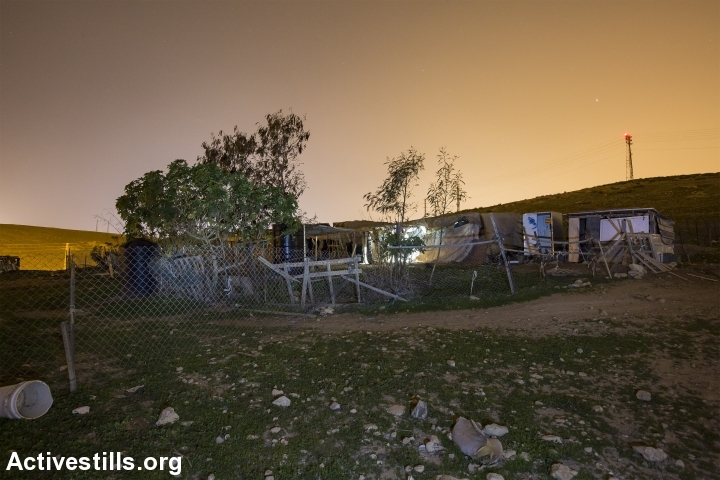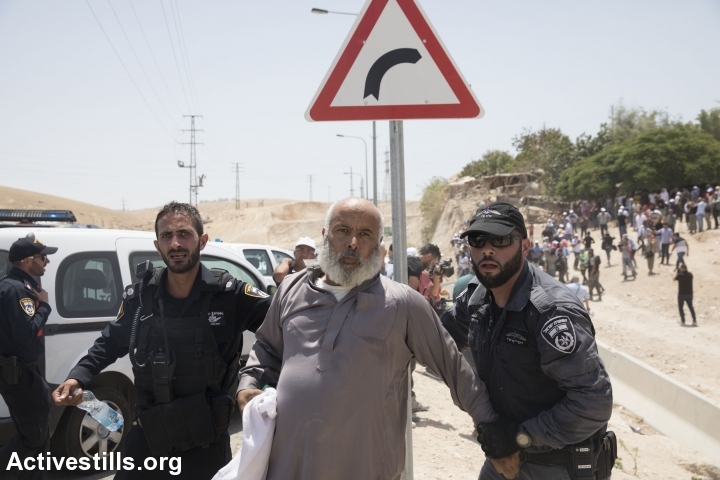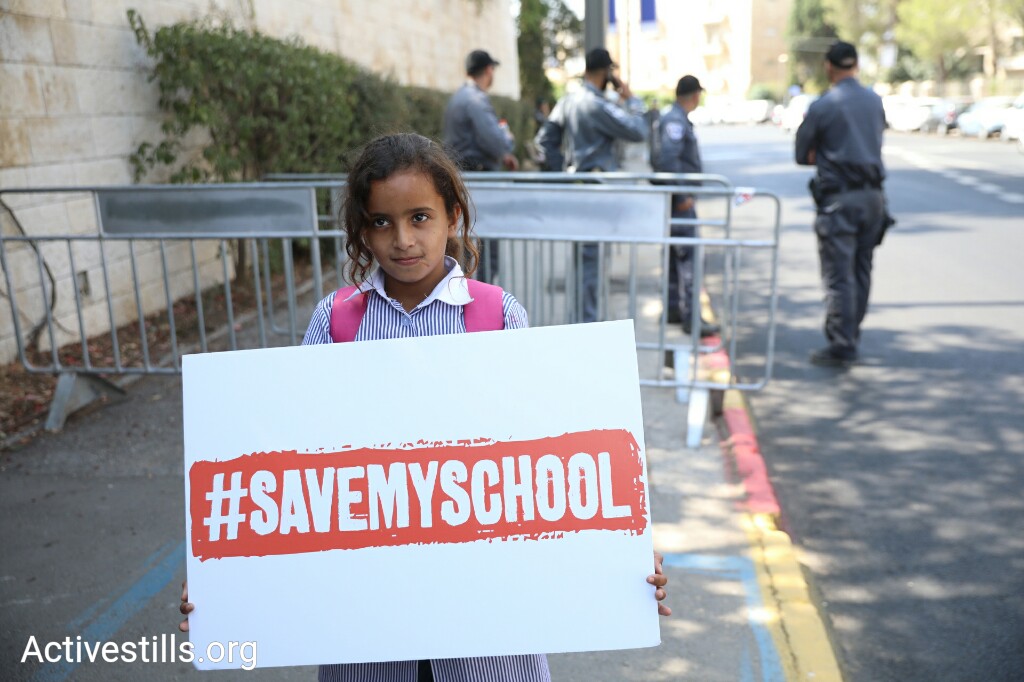The story of Khan al-Ahmar has been told countless times in the media in recent months. The way it is being told, however, is chock full of misconceptions. Here’s the real story behind the embattled village.
By Angela Godfrey-Goldstein

The village of Khan al-Ahmar, home to 193 Palestinian Bedouins and a school, is under the very real and imminent threat of demolition and forcible displacement by Israeli authorities. Israel wants to remove Khan al-Ahmar to facilitate its “E-1” development plan, which envisions 3,910 housing units for Israelis and over 2,000 hotel rooms, and which would connect the Israeli settlement of Ma’ale Adumim to East Jerusalem. The separation wall would then be built around that bloc, with Greater Jerusalem “Judaized” and the viability of a Palestinian state jeopardized.
The story of Khan al-Ahmar has been told countless times in the media in recent months as the Israeli High Court gave a green light to the demolition. The following months saw activists prepare for and fight what seemed like an imminent demolition. Then, as international pressure was ratcheted up, the Israeli government put the demolition on hold. The way that story has been told, however, is chock full of misconceptions.
Misconception 1: The High Court ordered the evacuation and demolition.
This falsity is propagated by Prime Minister Netanyahu. He stated: “This is a Court decision, this [evacuation and demolition] is our policy and it will be carried out.” Actually, the Israeli High Court stated that since the structures bear no permits they may be demolished, while leaving the decision to the state, but that the Bedouin may not be forcibly displaced, if they choose not to move.

To date, the Bedouin have rejected “offers” to be relocated next to a garbage dump, or alternatively, a sewage farm. The issue impacts not only those few Bedouins: tens of thousands of Palestinians are now threatened with demolitions in Area C of the West Bank — under full Israeli military control — which the ruling could negatively impact.
Misconception 2: The Bedouin of Khan al-Ahmar built illegally on state lands.
This frequent claim, that the Bedouin “built illegally on state lands” (since the 1950s) ignores the fact that the land is privately owned by Palestinians in Anata – a claim supported by the Israeli army which, earlier this year, issued temporary expropriation orders to those land owners for the construction of service roads to facilitate Khan al-Ahmar’s demolition. The Bedouins’ lawyer, Tawfiq Jabareen, told the court those lands were subject to expropriation proceedings in the 1970s, but which were never formalized, arguing that the ownership remains with the Palestinians.
The Bedouin residents of Khan al-Ahmar, refugees from the Negev in 1951, possess a lease from those Palestinian landowners.
As to the status of the Bedouin, despite a common misconception, they are not nomads. Traditionally landowners, moving seasonally as semi-nomads on their own desert lands, Negev Bedouins have been prevented by Israel from submitting their land deeds to the Israel Lands Authority; they are then accused of squatting on their own lands, at risk of being moved, to facilitate the myth of a land without people. Moreover, attorney Jabareen showed the Israeli army’s planning committee a Jordanian map that designated the zoning of the area as “desert lands,” which under the land laws applying to the area, would actually require no building permits.
Misconception 3: The residents of Khan al-Ahmar are being unreasonable
Nothing could be further from the truth. The Bedouin of Khan al-Ahmar have submitted a master plan proposing a move away from the highway, which Israeli authorities have refused to review. One of Israel’s arguments about why Khan al-Ahmar must be demolished is that it is too close to the highway.

Having built the school in 2009, the Bedouin of Khan al-Ahmar voluntarily moved its playground and toilet block in 2012 when the highway was built: a road engineer had promised to re-route the road so it wasn’t close to the school, which never happened.
There are numerous reports that the residents of Khan al-Ahmar are being “unreasonable” for refusing to move just 200 meters, but in reality that is not an offer that was ever made to them. They did research moving the village and its homes 500 meters but a planned Israeli highway would preclude that move, and the ownership of the land there is also problematic.
The presence of the Bedouin in Khan al-Ahmar is currently protecting contiguity between East Jerusalem and the rest of the West Bank, making them, for many, gatekeepers of the two-state solution. Demolishing their village and forcibly displacing them into urban developments would not only constitute potential war crimes, a situation being closely watched by the International Criminal Court prosecutor, doing so would also put the residents’ desert culture at great risk of disappearing.
Angela Godfrey-Goldstein is the co-director of Jahalin Solidarity.
